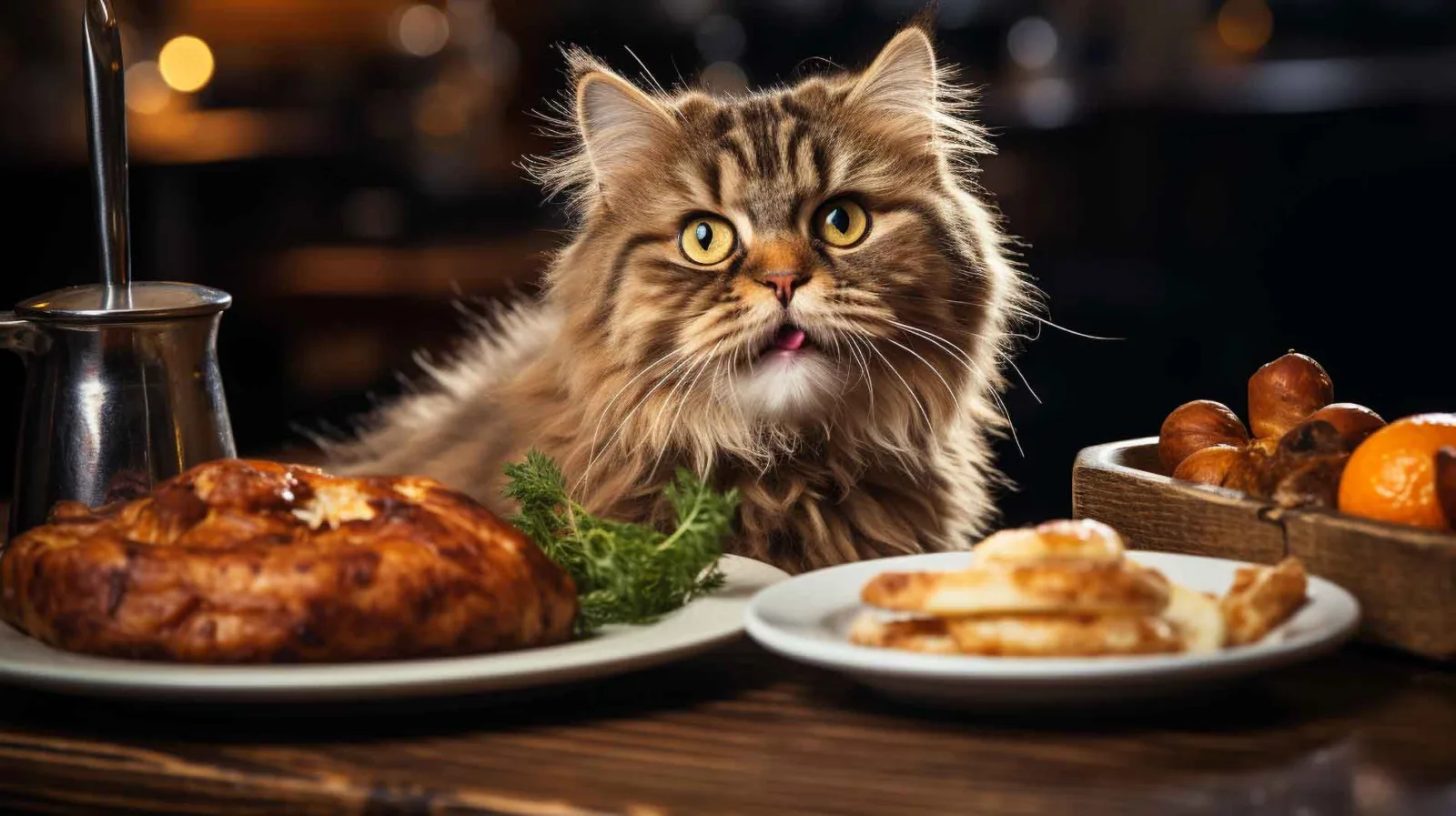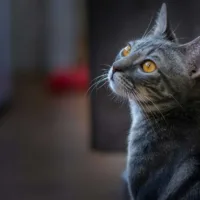If you’re a cat owner, you probably already know that cats are fascinating creatures with unique traits and behaviors. One aspect of their biology that sets them apart is their digestive system. Understanding how a cat’s digestive system works can help you make informed decisions about their diet and overall well-being. In this article, we’ll take a closer look at the intricacies of feline digestion.
Anatomy of a cat’s digestive system
A cat’s digestive system comprises several essential components, each playing a vital role in the process of breaking down and absorbing nutrients:
Mouth, teeth, and tongue
Cats have specialized equipment for their carnivorous lifestyle. Their sharp teeth and powerful jaw muscles are designed for holding and tearing meat. They use their teeth to break down food into smaller pieces, initiating the digestion process. A cat’s tongue is covered in tiny, backward-facing barbs called papillae, which help with removing meat from bones. These barbs also aid in moving food toward the back of the mouth and into the esophagus.

Cats don’t chew their food in the same way that humans do. While humans use their teeth to thoroughly chew and grind food into a pulp, cats primarily use their sharp, pointed teeth to slice through meat and tear it into smaller, more manageable portions. Their jaws are adapted for shearing, not grinding.
Esophagus
The esophagus is a muscular tube that is responsible for transporting food from the mouth to the stomach. After food is torn and mixed with saliva in the mouth, it travels down the esophagus through muscular contractions.
Stomach
The stomach plays a crucial role in digestion. Once food reaches the stomach, it encounters a highly acidic environment along with gastric juices. The stomach of a cat is divided into two regions – the fundus and the antrum.
The fundus is the upper part of the stomach, while the antrum is the lower part of the stomach. The fundus of a cat’s stomach secretes hydrochloric acid and pepsinogen, which helps in the digestion of proteins. The antrum of a cat’s stomach secretes mucus and bicarbonate, which helps in the protection of the stomach lining from the acidic environment.1

Liver and pancreas
The liver produces bile, which aids in breaking down fats further, while the pancreas secretes enzymes necessary for further digestion in the small intestine.
Small intestine
The small intestine is where the majority of digestion and nutrient absorption take place. The small intestine of a cat is a long, narrow tube that connects the stomach to the large intestine. It is divided into three regions – the duodenum, jejunum, and ileum. The duodenum of a cat’s small intestine receives digestive juices from the pancreas and liver. The jejunum of a cat’s small intestine is the primary site of nutrient absorption. The ileum of a cat’s small intestine absorbs water and electrolytes. The nutrients are then distributed throughout the cat’s body to provide energy and nourishment.1
Large intestine
Here, water is reabsorbed from the remaining digested material, playing a vital role in maintaining proper hydration. This process also leads to the concentration of waste products, ultimately contributing to the formation of feces.
The colon, located within the large intestine, divides into four distinct regions: the ascending colon, transverse colon, descending colon, and sigmoid colon. Each of these segments aligns well with the primary function of facilitating the movement, mixing, and absorption of water within the digestive process.1
Unique aspects of a cat’s digestion tract

A cat’s digestive system boasts several distinctive physical and dietary characteristics:
- Carnivorous nature: Cats, being obligate carnivores, have a digestive tract adapted to a high-protein diet. Their sharp teeth are designed for tearing and chewing meat.
- Short Digestive Tract: Carnivores typically have shorter digestive tracts compared to herbivores or omnivores. This shorter length is a reflection of their dietary habits. Meat is relatively easy for cats to digest as it contains fewer complex carbohydrates and cellulose than plant-based foods, which require longer intestines to process. Animal tissue requires less time for processing and absorption. As a result, carnivores have evolved shorter intestines.
- Limited carbohydrate digestion: Cats have a limited ability to digest carbohydrates compared to other animals. Their digestive enzymes are primarily geared toward breaking down proteins and fats, not carbohydrates. They’re also missing the enzyme amylase that humans or dogs use to start digesting carbs.
- Taurine requirement: Unlike some other animals, cats require taurine, an essential amino acid, in their diet. Taurine plays a crucial role in maintaining their eye health and overall well-being.
- Regurgitation and hairball management: Cats have a unique way of dealing with indigestible matter. They can regurgitate hairballs, which are formed when hair and other indigestible materials accumulate in their stomach. This natural mechanism helps them avoid digestive issues associated with hair ingestion.
- Bladder size and urination frequency: Cats, in comparison to larger mammals, have relatively small bladders. It’s important to keep this in mind when considering their hydration and overall health. Adequate water intake and access to a clean litter box are essential to accommodate their natural urinary habits. Regular urination helps maintain urinary tract health and prevent issues like urinary tract infections.
The ideal cat food – meeting feline dietary needs
As said, cats are obligate carnivores, which means their ideal food aligns with their natural diet of meat. Their bodies thrive on animal-based proteins. While they require protein-rich diets, it’s important to understand that cats do not require a significant amount of carbohydrates in their diet. Their digestive system is not optimized for breaking down carbohydrates efficiently. Too much carbohydrate content can even make them sick. If you want to read up more on how to determine high-quality cat food, here’s a list of our criteria.
Primary ingredient: Meat
The best cat food should feature meat as the primary ingredient, ensuring a rich source of protein. The amino acids your cat’s digestive system absorbs maintain lean muscle and promote her well-being. When selecting cat food, check the label for clear indications that the primary ingredient is meat, such as chicken, beef, or fish.
High-quality commercial cat foods typically list meat as the first ingredient and adhere to recommendations set by organizations like AAFCO (Association of American Feed Control Officials) and FEDIAF (European Pet Food Industry Federation). These organizations establish guidelines for the nutritional content of cat food to ensure it meets feline dietary needs.
Every commercial cat food has the minimum recommended amount of Taurine, but for a guaranteed high enough intake, you should offer a variant of different foods in order to balance out the nutrients your cat gets.
Balanced nutrients
An ideal cat food offers a balanced combination of fats, vitamins, and minerals. These nutrients provide energy and support various bodily functions, maintaining your cat’s overall health. High-quality cat foods formulate their products to meet cats’ specific dietary requirements, including the right balance of essential nutrients. This ensures that your cat’s nutritional needs are met with every meal.
Limited carbohydrates
Cats have a limited ability to digest carbohydrates. Opt for cat food that minimizes the inclusion of carbohydrates, as it can be challenging for cats to process them efficiently. This ensures that your cat’s diet focuses on protein, which is essential for their health. Check the ingredient list for grains, fillers, meals, and select options with lower carbohydrate content. This means that this kind of ingredient does not exist or that it is at least not among the first three ingredients.
Avoid fillers and artificial additives
Select cat food options that avoid fillers and artificial additives. Lower-quality cat food may use fillers such as corn, wheat, and soy, which provide little nutritional value to your cat. Artificial additives like colors and flavors are unnecessary and may not be suitable for your cat’s health. Choose cat food that emphasizes natural ingredients and minimizes unnecessary additives.
Water intake in wet food and disadvantages of dry food
Wet cat food offers a distinct advantage when it comes to maintaining proper hydration due to its high moisture content. The increased water content in wet food helps cats meet their daily water needs, addressing their limited thirst drive. This can contribute to overall urinary tract health and prevent dehydration. In contrast, dry cat food, while convenient, typically has low moisture levels, leading to constant dehydration in cats. This increases the risk of urinary tract issues. Use wet food to ensure she stays well-hydrated.
In exploring the nuances of a cat’s digestive system, you can find a remarkable adaptation forged by millions of years of evolution. While some similarities exist with our own digestion, the defining factor is their carnivorous nature. Cats have honed their anatomy to excel in the efficient digestion of meat, from sharp teeth to compact intestines. This divergence in dietary needs underscores the rich diversity of life on Earth. Understanding their unique requirements informs our care and nourishment choices, allowing our feline companions to thrive within the complex tapestry of the natural world.







